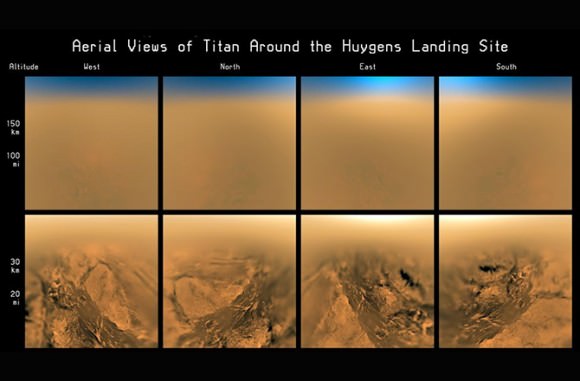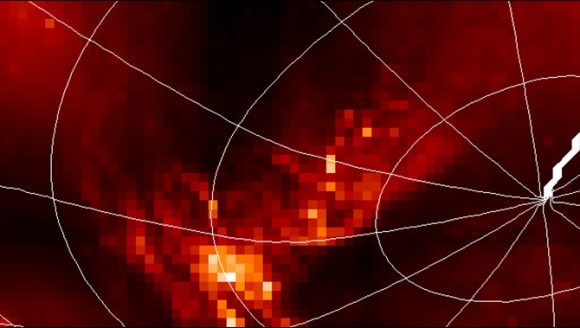Titan is a moon shrouded in mystery. Despite multiple flybys and surface exploration conducted in the past few decades, this Cronian moon still manages to surprise us from time to time. In addition to having a dense atmosphere rich in hydrocarbons, which scientists believe may be similar to what Earth’s own atmosphere was like billions of years ago, it appears that methane is to Titan what water is to planet Earth.
In addition, methane fog was also observed by the Cassini space probe back in 2009 as it conducted a flyby of Titan. But recent findings by a team of researchers from York University indicates that the Huygens lander also detected fog during its descent towards the surface in 2005. This evidence, combined with the data obtained by Cassini, have helped to shed light on the weather patterns of this mysterious moon.
In a paper that appeared in arXiv on March 14th, Dr. Christina Smith – a postdoctoral researcher from York University’s Center for Research in Earth and Space Sciences (CRESS) – described how the Huygens probe’s Side Looking Imager (SLI) obtained information that has since been analyzed to identify potential atmospheric features. These features show that Titan experiences meteorological phenomena which were not previously known.

In total, the team looked over 82 SLI images, which were all taken after the lander reached the surface. These were then calibrated, processed and examined for signs of atmospheric features. Of these, six showed evidence of an extended horizontal feature that differed in radiance from what was predicted at higher and lower regions. No other discernible features were detected.
The team concluded that this feature most likely originated from the presence of a fog bank close to the horizon that rose and fell during the period of observation. This indicated that it had recently rained in the area, which was a rather surprising find. Much like the observations made in 2009, the presence of methane fog shows that Titan has an active methane hydrological cycle.
In essence, this means that methane on Titan is subject to the same transfer process as water is here on Earth. Basically, liquid methane on the surface evaporates and is exchanged with the atmosphere, where it condenses to form fog banks and rain clouds. As Christina Smith told Universe Today via email:
“We initially set out to see if we could see features such as clouds from the Huygens SLI data, but the features we found don’t seem to be consistent with clouds and more likely are caused by a fog bank rising and falling over the time of observation. Fog had been seen before from orbit but never from the surface of Titan – this is what makes this work so exciting. This work is also a great example of how new insights and new findings can be made from “older” data sets.”

Looking over this old data for the sake of making new discoveries was made possible, in part, because of the ongoing investigations conducted by Martian rovers and their respective science teams. Brittney Cooper – an undergraduate research assistant at CRESS and the second author of the paper – explained via email:
“We applied a technique of image analysis developed by Mark Lemmon for use with the Mars Exploration Rovers that was adapted by John Moores for use on the Mars Phoenix lander mission. This analysis method allowed the faint, barely observable atmospheric features captured by the Huygens’ probe Side Looking Imager (SLI) on Titan to be amplified and more easily discerned.”
For years, scientists have understood that on Titan, methane is analogous to water. It exists in liquid form (especially around the north pole where several large methane lakes exist), and in gaseous form in the atmosphere. However, what they did not know was whether or not there was an active cycle, where liquid methane on the surface was replenished through evaporation, condensation, and rain.
But this evidence, combined with the Cassini probe data, shows that on Titan, there is an active transfer process between the liquid methane and the atmospheric methane. And where atmospheric humidity reaches 100%, methane fogs will form. Just the latest in a long line of fascinating discoveries to emerge from this mysterious moon!

